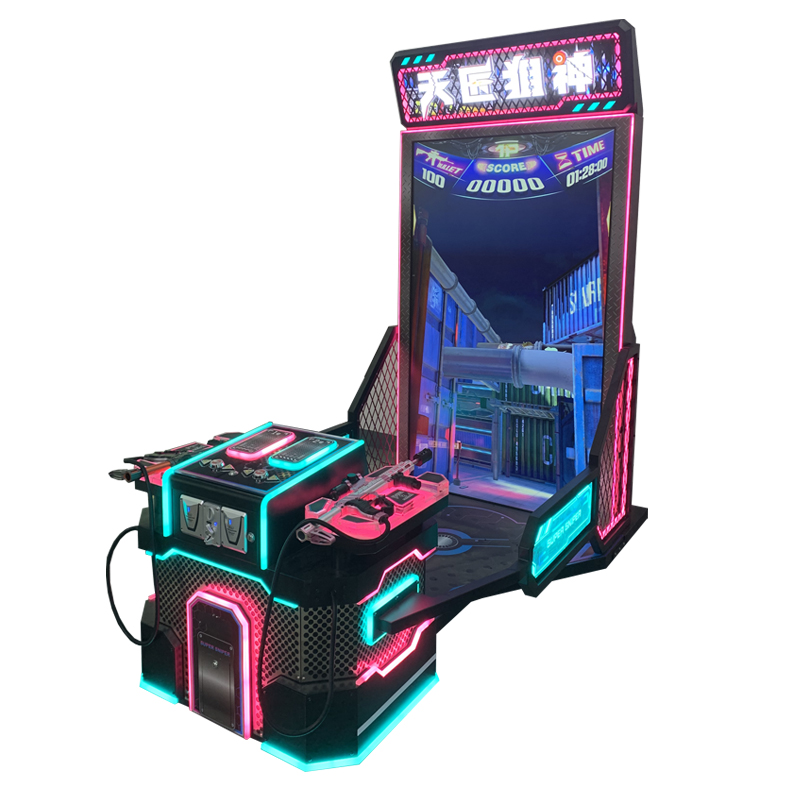Arcade machines are typically large, coin-operated systems found in public spaces, offering a single or limited number of games with specialized controls. Consoles, like PlayStation or Xbox, are home-based devices that support a wide range of games via physical or digital media. Arcade machines are often built for high durability, handling frequent use in commercial settings, while consoles focus on home entertainment and convenience. In terms of cost, arcade machines can range from $1,000 to $5,000, whereas consoles are priced between $300 to $500.
Table of Contents
ToggleHardware Differences
Arcade machines usually have higher specifications, specifically designed for high-intensity gaming experiences. A typical home arcade machine includes a large display (usually 32 inches or larger), a professional sound system, and control panels with joystick buttons. This hardware is designed to enhance the game itself through impactful visual and audio experiences. The well-known arcade game “Street Fighter II” is equipped with a high-resolution CRT display capable of handling complex graphics and fast response times.
Home game consoles are limited by price and size, and in most cases, the console itself measures 390 mm x 104 mm x 260 mm, so it cannot be directly placed into a cabinet like an arcade board. Aside from having nearly four times the performance of its predecessors, its display must be located in your home rather than being built into a machine with high-end displays. High-tech home game console controllers, such as the PS5’s DualSense, although featuring innovations like haptic feedback and adaptive triggers, are still not durable or precise enough to match arcade demands.

Usage Scenarios
Arcade machines are usually placed in public entertainment venues with high foot traffic, such as shopping malls, cinemas, and arcades. According to Statista, the global arcade gaming market generated about $3.5 billion in revenue last year. This kind of public gaming experience is usually designed to require time limits, and players must insert coins or recharge cards to play games. In Japan, players pay an average of 100 yen (about $0.90) per arcade game, and when the game ends, players often spend more money to buy additional lives.
Video game consoles mainly appear in home environments. According to the Entertainment Software Association (ESA) report, in 2021, about 41% of U.S. households owned some type of game console. This means that most console games can be taken home and enjoyed at any time without additional payments or time restrictions. As the COVID-19 pandemic led to a remarkable increase in home entertainment sales, global console sales reached the milestone of 83 million units in 2020.
Game Types
Arcade games are typically more stimulating in a short period of time, and rhythm games like “Taiko no Tatsujin” usually involve short bursts of action, lasting about 2-3 minutes. Most arcade games are rhythm or fighting-themed, but some belong to racing and fitness categories as well.
The types of games available on consoles are also much more diverse, ranging from casual experiences like “Candy Crush Saga” to large open-world productions like “Red Dead Redemption 2.” Different console games vary in time and depth. The main storyline of “The Witcher 3: Wild Hunt” takes about 50 hours to complete, but completing all the side quests could extend the game time to over 170 hours. ESA also found that 67% of console players prefer long story-driven or open-world games, which provide hours of immersive gaming experiences.

Business Models
Arcades rely on coin or card insertion models. According to international market research company IBISWorld, arcade players spend an average of $15 per session, and one-third of players will insert more coins to aim for high scores or unlock more complex levels. According to Sega, a large Japanese company, about 45% of players in its “Project Cars” arcade game play at least once a week, ensuring a stable cash flow for arcade companies.
Console game manufacturers not only make money through hardware sales but also through game sales and services. Sony’s gaming hardware has a gross profit margin of about 15%, while digital games and online services have a gross profit margin of up to 45%. In 2020, PlayStation Plus subscription service revenue reached $2.5 billion, accounting for nearly one-third of Sony’s total gaming revenue. These users purchase game discs or download digital versions and subscribe to PlayStation Plus (not mandatory on PS4 but already available) or Xbox Game Pass to unlock more game content and online multiplayer modes. This way, console manufacturers not only profit from one-time hardware sales but also increase profits through long-term service revenue.








